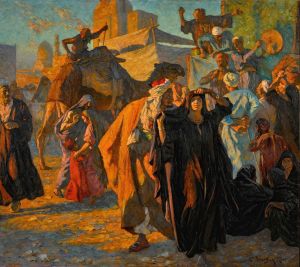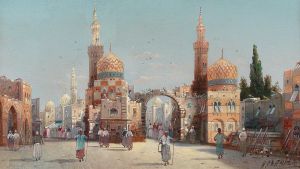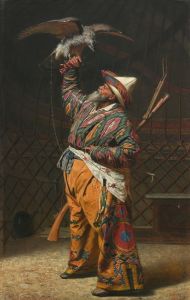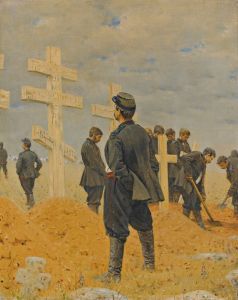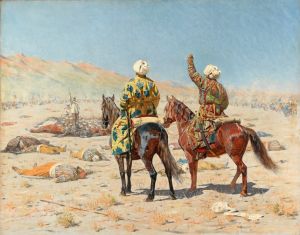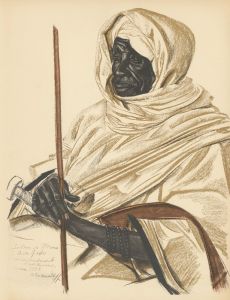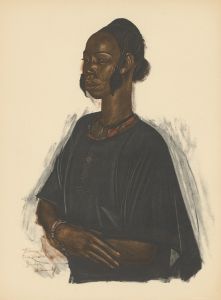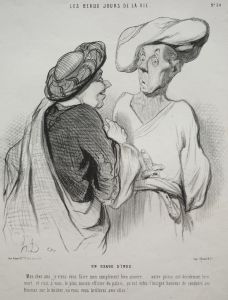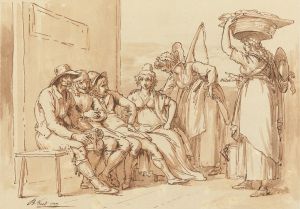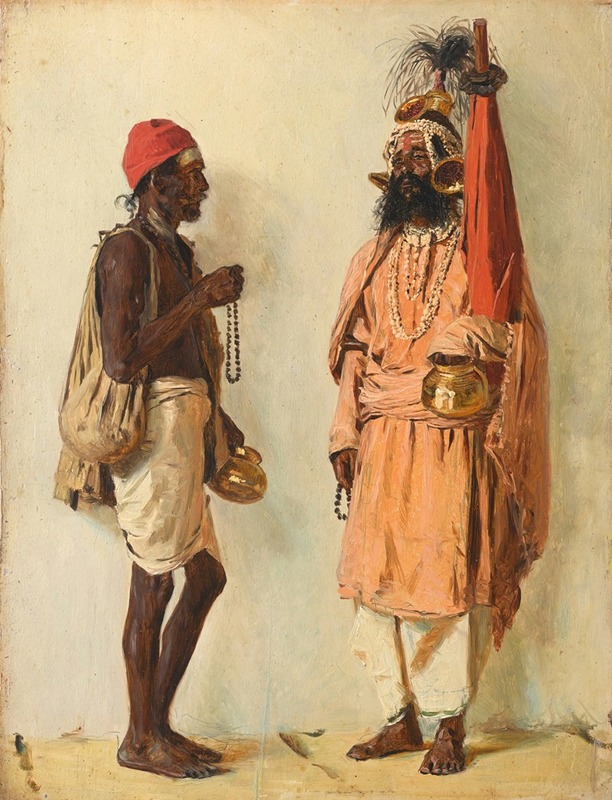
Fakirs
A hand-painted replica of Vasily Vereshchagin’s masterpiece Fakirs, meticulously crafted by professional artists to capture the true essence of the original. Each piece is created with museum-quality canvas and rare mineral pigments, carefully painted by experienced artists with delicate brushstrokes and rich, layered colors to perfectly recreate the texture of the original artwork. Unlike machine-printed reproductions, this hand-painted version brings the painting to life, infused with the artist’s emotions and skill in every stroke. Whether for personal collection or home decoration, it instantly elevates the artistic atmosphere of any space.
Vasily Vereshchagin was a renowned Russian war artist and traveler, known for his vivid and often controversial depictions of war and the cultures he encountered during his travels. One of his notable works is "Fakirs," which captures a scene from his journeys in India. Vereshchagin's art is characterized by its attention to detail and its ability to convey the atmosphere and essence of the places he visited.
"Fakirs" is a painting that reflects Vereshchagin's interest in the diverse cultures and traditions he witnessed during his travels. The painting depicts a group of fakirs, who are ascetic practitioners often associated with Hinduism and Islam in India. Fakirs are known for their spiritual practices, which can include meditation, yoga, and various forms of self-discipline. They are often seen as holy men who have renounced worldly possessions and live a life of simplicity and devotion.
In "Fakirs," Vereshchagin captures the essence of these ascetic figures with his characteristic attention to detail. The painting likely portrays the fakirs in a setting that highlights their spiritual practices and the environment in which they live. Vereshchagin's use of color and composition would have been aimed at bringing out the vibrancy and intensity of the scene, drawing viewers into the world of the fakirs.
Vereshchagin's work often sparked discussions and sometimes controversy due to its unflinching portrayal of subjects that were not commonly depicted in Western art at the time. His paintings, including "Fakirs," serve as a visual record of his experiences and observations, providing insight into the cultures and traditions he encountered. Vereshchagin's approach was not just to document but to evoke a deeper understanding and empathy for the subjects he painted.
The painting "Fakirs" is part of Vereshchagin's broader body of work that explores themes of cultural diversity, spirituality, and the human condition. His travels to India and other parts of Asia were instrumental in shaping his artistic vision and expanding the scope of his work beyond the battlefields he is often associated with. Through paintings like "Fakirs," Vereshchagin contributed to a greater appreciation and awareness of the rich cultural tapestry of the regions he visited.
While specific details about the painting "Fakirs" such as its current location or the exact year it was painted may not be readily available, it remains an important piece within Vereshchagin's oeuvre. His work continues to be studied and appreciated for its artistic merit and its ability to transcend cultural and temporal boundaries, offering viewers a glimpse into the diverse world that Vereshchagin experienced firsthand.





